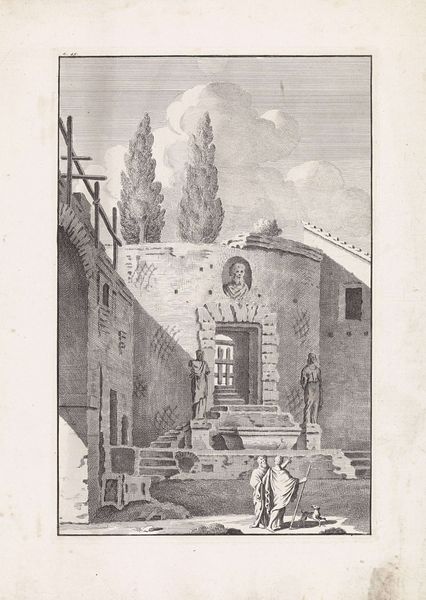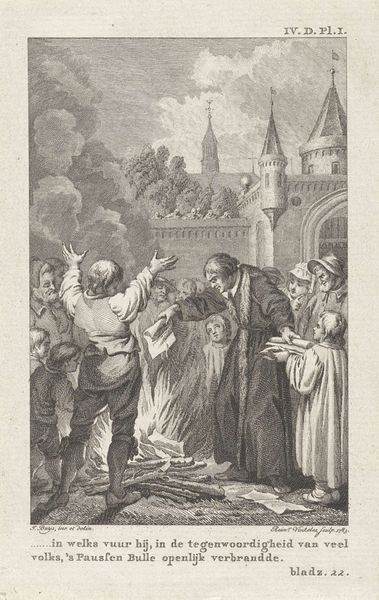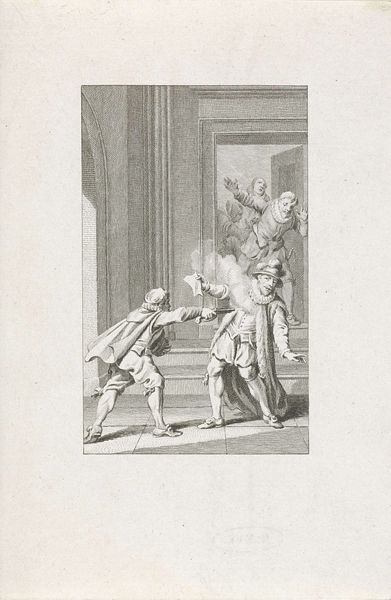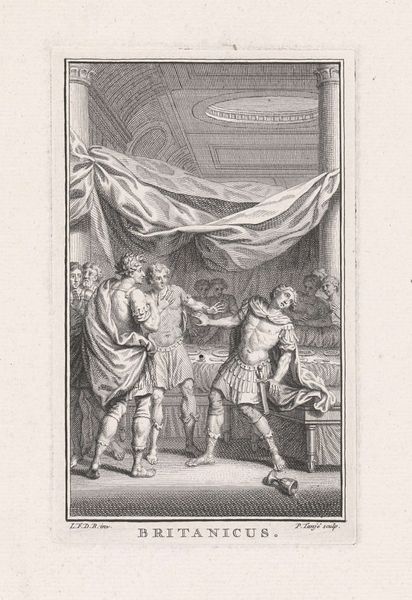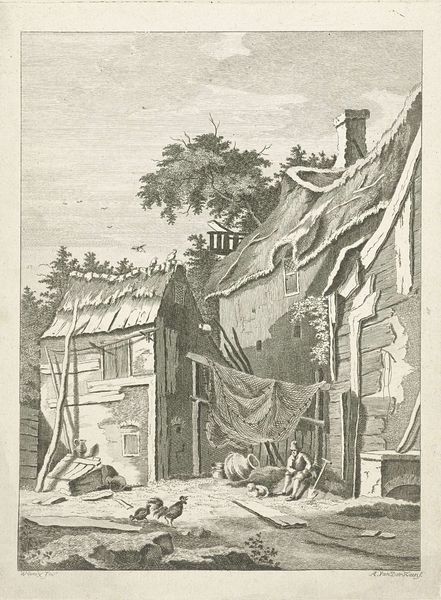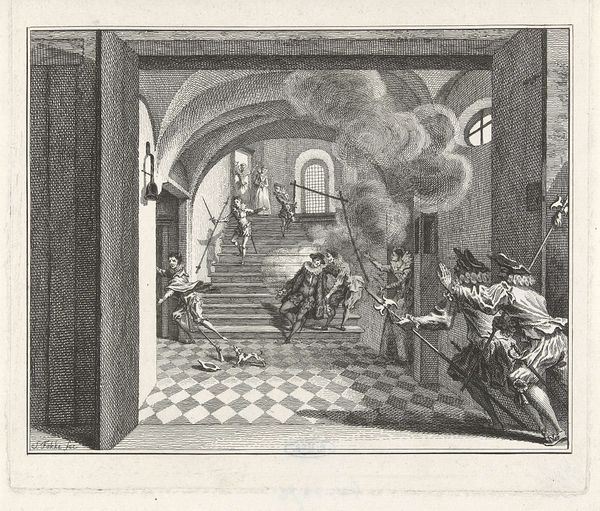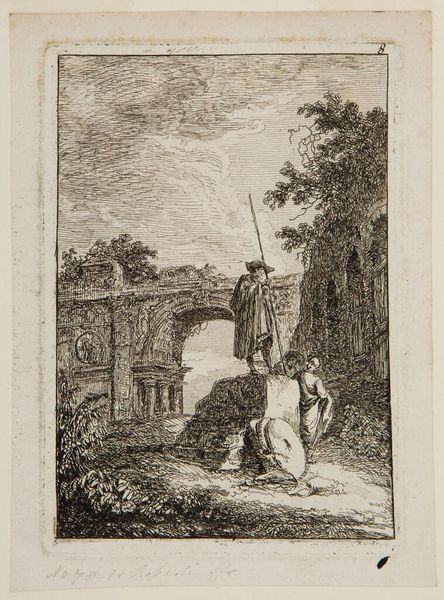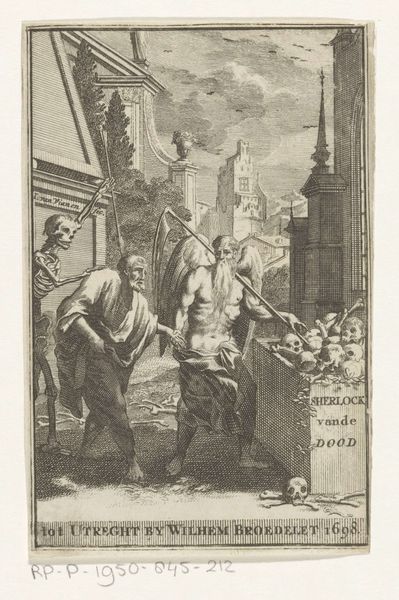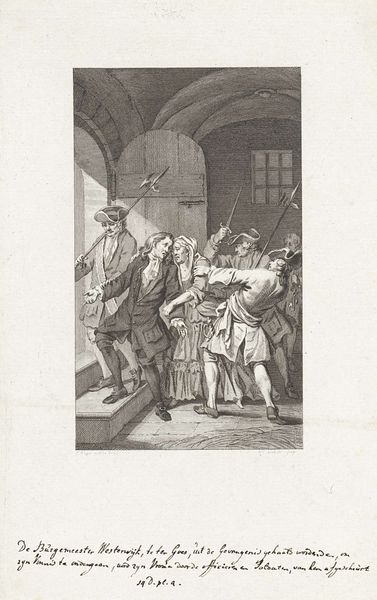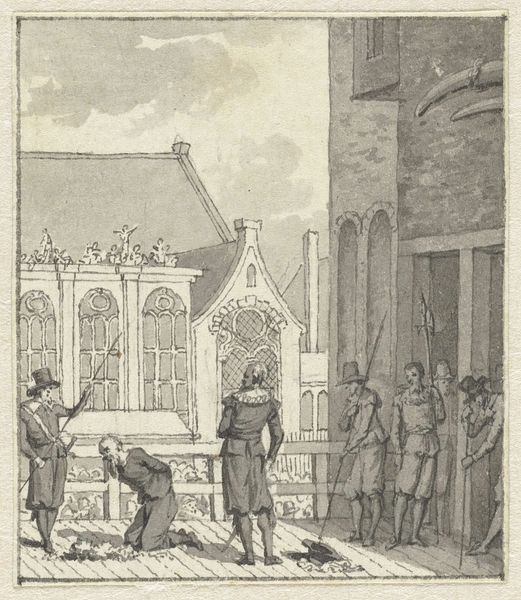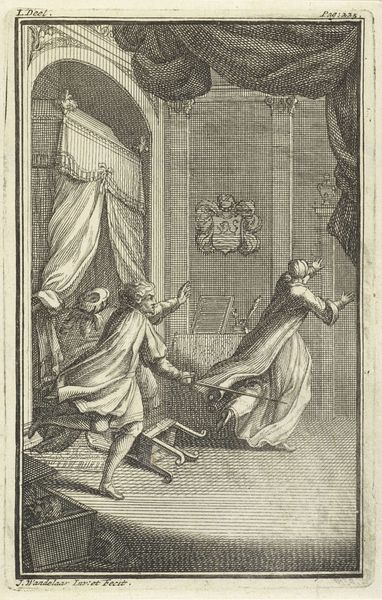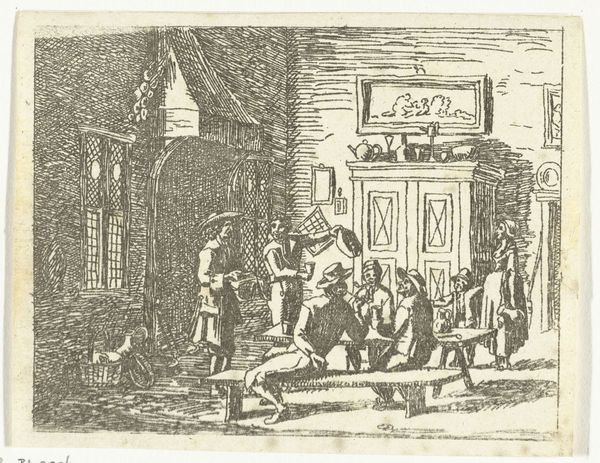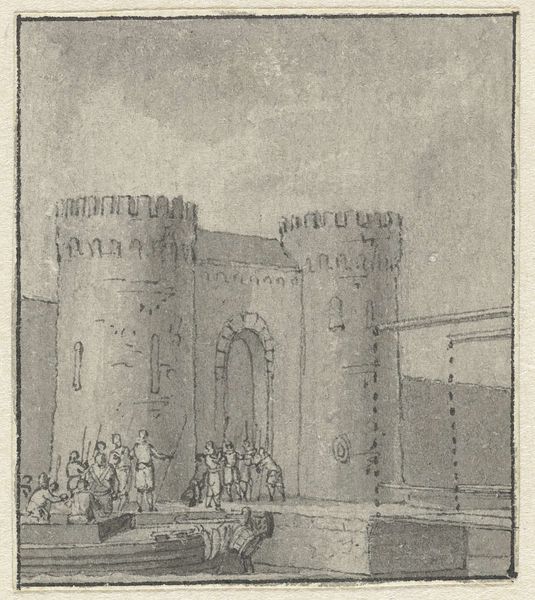
Dimensions: height 65 mm, width 55 mm
Copyright: Rijks Museum: Open Domain
Curator: Here we have an ink drawing on paper titled "In 't Jaar 1584," or "In the Year 1584." It was created sometime between 1789 and 1810 by an anonymous artist. What are your first thoughts? Editor: My initial reaction is one of high drama! There's so much tension packed into this relatively small scene. The stark contrasts created by the ink wash give it a cinematic quality, like a pivotal moment in a play. Curator: Precisely. It invites questions about power, resistance, and perhaps even the seeds of revolutionary change. I wonder about the social context of portraying an assassination with such graphic immediacy, particularly during a time of considerable political upheaval. Editor: Absolutely. Consider the year 1584—William the Silent was assassinated. So the artist and their audience, viewing this between 1789 and 1810, would have been engaging with anxieties around leadership, violence, and national identity. There’s a direct commentary on historical trauma. The figure with the gun appears to be asserting control, while the other seems to be desperately warding off an attack. Who gets to tell history, and who is erased by it? Curator: Also, look at the architectural space: it's monumental and imposing, almost dwarfing the figures and underscoring their vulnerability. It also feels quite staged, or allegorical, a controlled performance for our gaze as viewers. How does this construction play into the narratives around power and historical events? Editor: The staging underscores the very performativity of power itself. Aren't political acts always performances in some way? Even the act of recording this event on paper turns it into another kind of performance, an interpretation rather than simply a record. Curator: Well said. This piece urges us to engage with art, not as passive observers, but as active participants in constructing meaning and understanding the complexities of power throughout history. Editor: Yes, this work feels remarkably contemporary, given its creation period. It leaves me pondering not just the events of 1584, but also how we, today, navigate political turbulence and interpret narratives of the past.
Comments
No comments
Be the first to comment and join the conversation on the ultimate creative platform.
